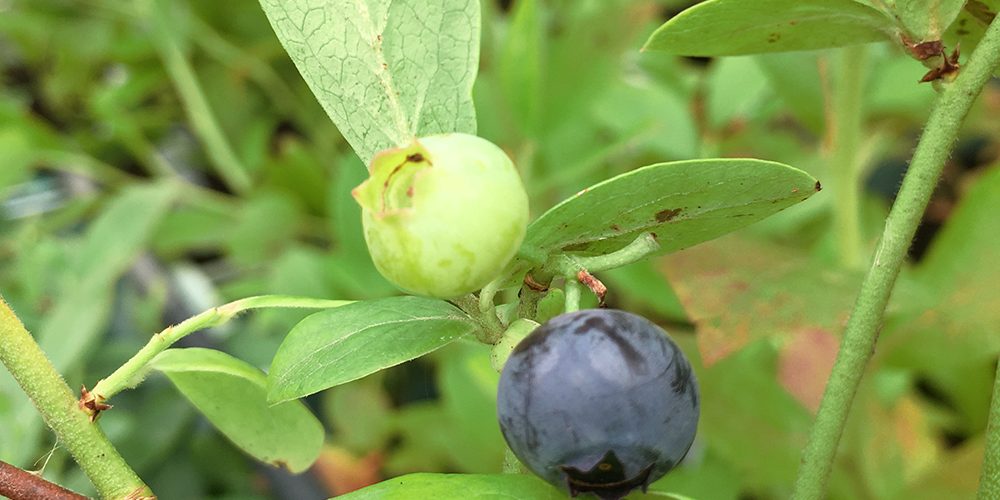Blueberries really do grow best in pairs, even if they are self-fertile, and you need to give them a little time to get well established. It is well worth the wait though, and if you can grow them in large pots with ericaceous compost, you’ll be off to a very good start.
Site & Planting
- These bushes do best in moist, well-drained, acidic soil (a pH of 4.0-5.5 is ideal). If growing in pots, use an ericaceous potting compost.
- Site blueberries in the sun or partial shade.
- Plant 1m apart in beds or in separate large pots, as soon as possible after receiving them.
- Even if you have chosen a self-fertile variety, blueberry bushes are best planted in pairs to improve cross-pollination. If you only have one plant, and it is self-fertile, then you should still get a good crop, but it will be a bigger better crop if there is another plant!
Growing Tips & Pruning Advice
- Keep the soil moist throughout the first growing season. In later years, water thoroughly on a weekly basis during prolonged dry spells.
- Keep them weed-free and apply an annual mulch of ericaceous compost.
- Prune from year two onwards each winter by removing a fifth of your blueberry bush, cutting back to strong new growth, and taking off any new branches that are likely to touch the ground under the weight of the crop.
Harvesting
- You should be able to harvest from July through to August by picking off the berries.
- Your crop in year 1 may be quite sparse, but once the plant is a little more mature you should get a better yield.
- Poor pollination can be a problem, even with the self-fertile varieties as they flower in early spring when there aren’t many bees around. If this is the case, you may find it beneficial to grow another 1 or 2 blueberry plants alongside what you already have.




